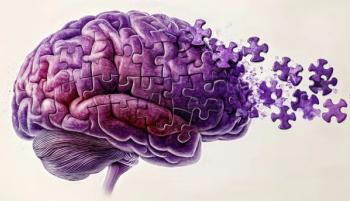
Psychiatric Issues in Emergency Care Settings
- Psychiatric Issues in Emergency Care Settings Vol 6 No 2
- Volume 6
- Issue 2
Physical Aggression in Dementia Patients
In patients with dementia who are physically aggressive and dangerous to themselves or others, the use of intramuscular haloperidol or lorazepam may be appropriate. Because haloperidol causes less drowsiness and cognitive impairment than lorazepam, it is preferred in patients with dementia and delirium. The usual dose of haloperidol for elderly patients with dementia is 0.5 to 1 mg; this dose can be repeated every 25 to 30 minutes until the patient is no longer dangerous to self or others. If benzodiazepine or alcohol withdrawal is suspected, lorazepam is the preferred medication. Physical restraints may be appropriate until the medication takes effect.
In patients with dementia who are physically aggressive and dangerous to themselves or others, the use of intramuscular haloperidol or lorazepam may be appropriate. Because haloperidol causes less drowsiness and cognitive impairment than lorazepam, it is preferred in patients with dementia and delirium. The usual dose of haloperidol for elderly patients with dementia is 0.5 to 1 mg; this dose can be repeated every 25 to 30 minutes until the patient is no longer dangerous to self or others. If benzodiazepine or alcohol withdrawal is suspected, lorazepam is the preferred medication. Physical restraints may be appropriate until the medication takes effect.
(Sources: Desai AK, Grossberg GT. Recognition and management of behavioral disturbances in dementia. Primary Care Companion J Clin Psychiatry. 2001;3:93-109; American Psychiatric Association. Practice Guidelines for the Treatment of Patients With Delirium. Washington, DC: American Psychiatric Association. 1999.)
Articles in this issue
over 18 years ago
Methadone CAUTIONSover 18 years ago
IMMIGRATION AND MENTAL HEALTHover 18 years ago
Antipsychotics and Weight Gainover 18 years ago
FACTITIOUS DISORDERover 18 years ago
Anxiety Disorders: Aortic Aneurysm in the Differential?Newsletter
Receive trusted psychiatric news, expert analysis, and clinical insights — subscribe today to support your practice and your patients.

















